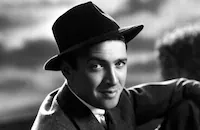Although Elmer Bernstein received an Academy Award for his score for Thoroughly Modern Millie (1967), today it is not as highly regarded as his work for films such as The Shootist (1976), The Man With the Golden Arm (1955), To Kill a Mockingbird (1962) and especially The Magnificent Seven (1960), one of the most famous of all film scores. Due in part to his studies with composer Roger Sessions and his experience with Glenn Miller's Army Air Corps Band, Bernstein has an affinity for a wide variety of American musical idioms, especially jazz, which he used to great effect in his recent score for Devil in a Blue Dress (1995). The Western genre is one of his particular strengths, as demonstrated by his collaborations with such notable directors as John Ford, Anthony Mann, Henry Hathaway, John Sturges, and in this case, Don Siegel. In recent years, Bernstein has championed the cause of classic film score composers such as Miklos Rosza, Dimitri Tiomkin and Max Steiner, recording their scores through his own record label, Film Music Collection.
The montage sequence which recounts J. B. Book's past as a gunfighter uses footage from earlier John Wayne vehicles such as Red River (1948), Rio Bravo (1959) and El Dorado (1967), making it literally a summation of his Western film career. When Wayne read Glendon Swarthout's novel in 1974, he tried to buy the screen rights to it, but Paramount had beat him to it. Although in retrospect Wayne seems like the obvious first choice for the lead role, in fact it was offered to Paul Newman, George C. Scott, Charles Bronson, Gene Hackman and Clint Eastwood, all of whom turned it down before Wayne was selected.
John Wayne was highly self-conscious of his public image, considering it unmanly to be photographed in production stills while makeup was being applied with a powder puff. He also insisted on using a particular reddish tint of makeup, which flattered his complexion but created headaches for cinematographer Bruce Surtees. Most importantly, he insisted on toning down the profanity and more explicit references to cancer from the original novel and refused to shoot a villain in the back during a key fight scene, as these details contradicted the basic morality of his on-screen legend. When Doctor Hostetler, played by James Stewart, informs Books that he is dying of cancer, the scene takes on added resonance today; it was Wayne's final film before succumbing to the disease in 1979.
The Shootist received one Oscar nomination for Best Art Direction, thanks to the work of production designer Robert F. Boyle and set designer Arthur Jeph Parker. One example of the film's meticulous attention to period detail is the town's turn-of-the-century horse-drawn trolley, which actually had been used for a connecting route between El Paso, Texas and Juarez, Mexico. Richard Boone, who plays the lead villain, is best known for his stint on TV as the hero of the long-running series, Have Gun, Will Travel (1957-63).
Director: Don Siegel
Producer: M. J. Frankovich, William Self
Screenplay: Miles Hood Swarthout and Scott Hale, based on the novel by Glendon Swarthout
Cinematography: Bruce Surtees
Editing: Douglas Stewart
Music: Elmer Bernstein
Principal Cast: John Wayne (John Bernard Books), Lauren Bacall (Bond Rogers), Ron Howard (Gillom Rogers), James Stewart (Dr. Hostetler), Richard Boone (Sweeney), Hugh O'Brian (Pulford).
C-99m. Letterboxed. Closed captioning.
By James Steffen






























